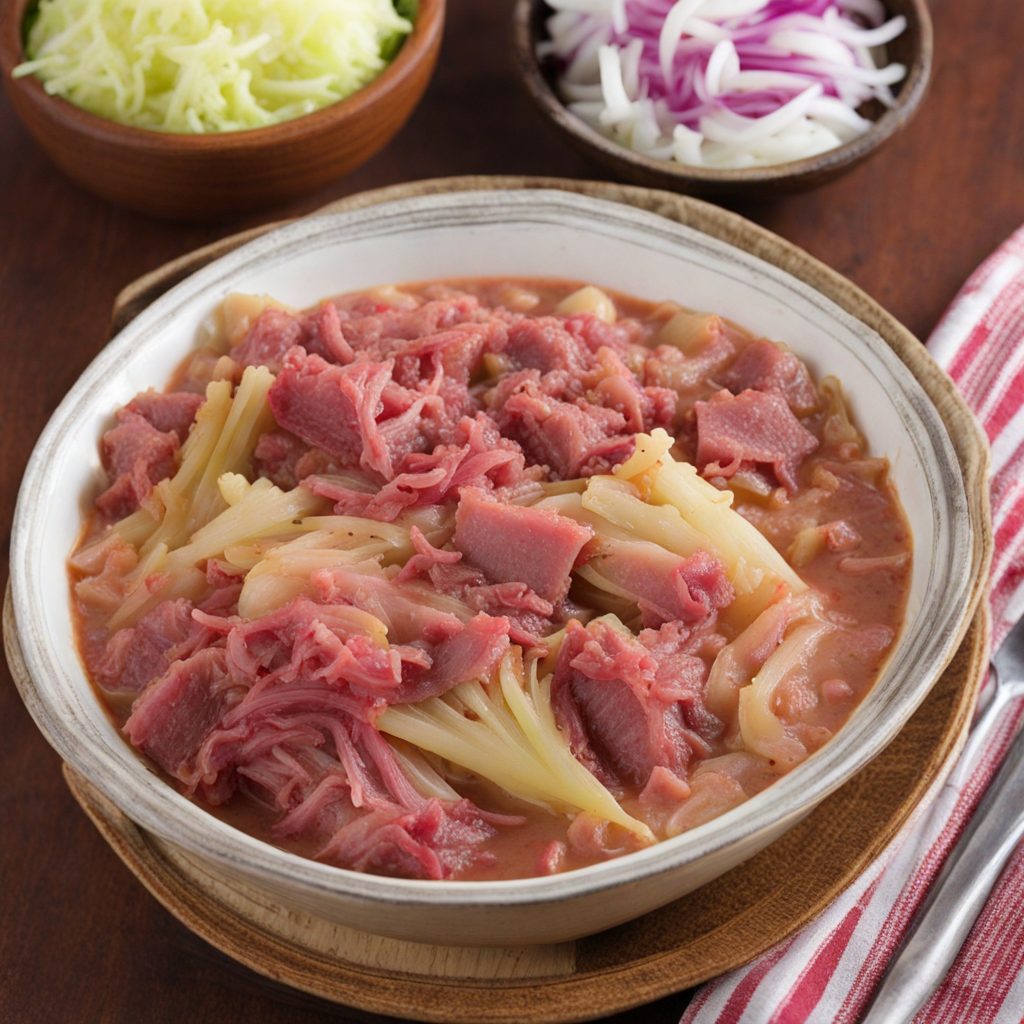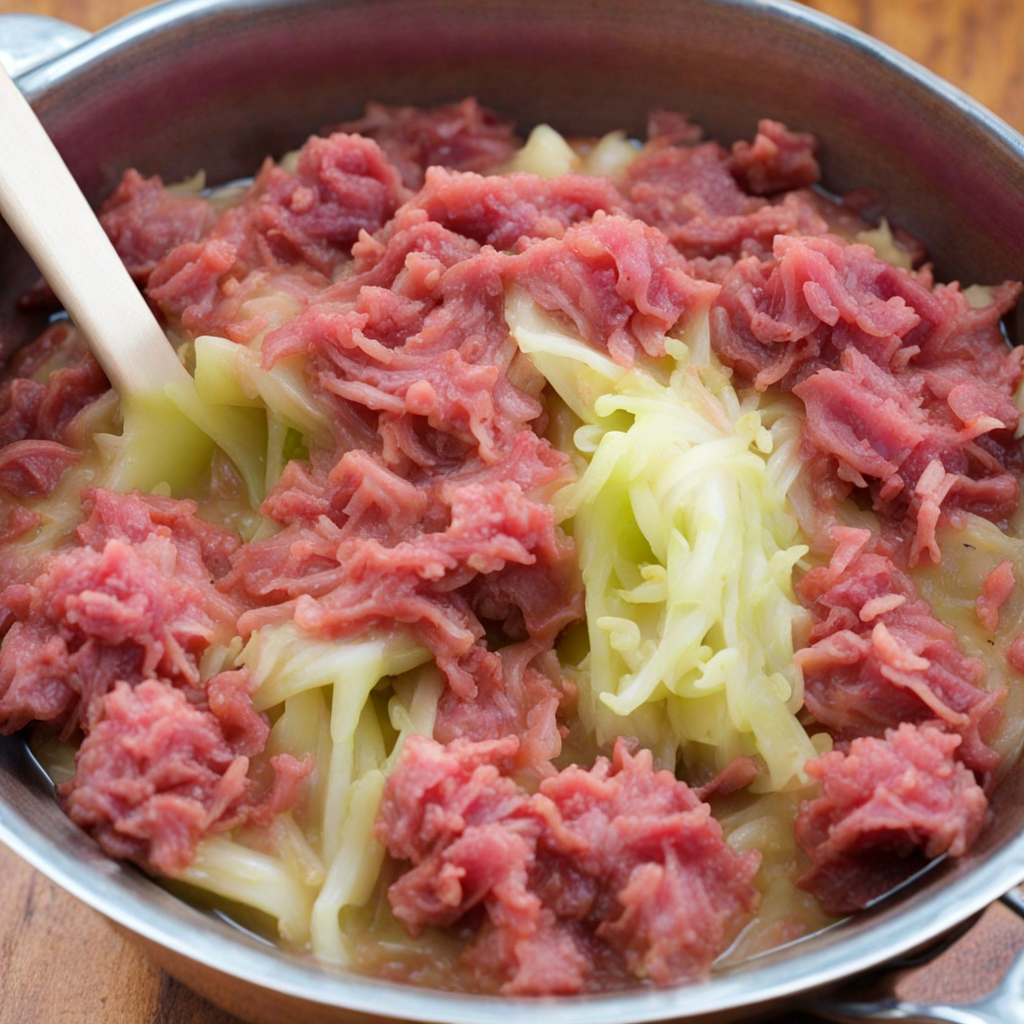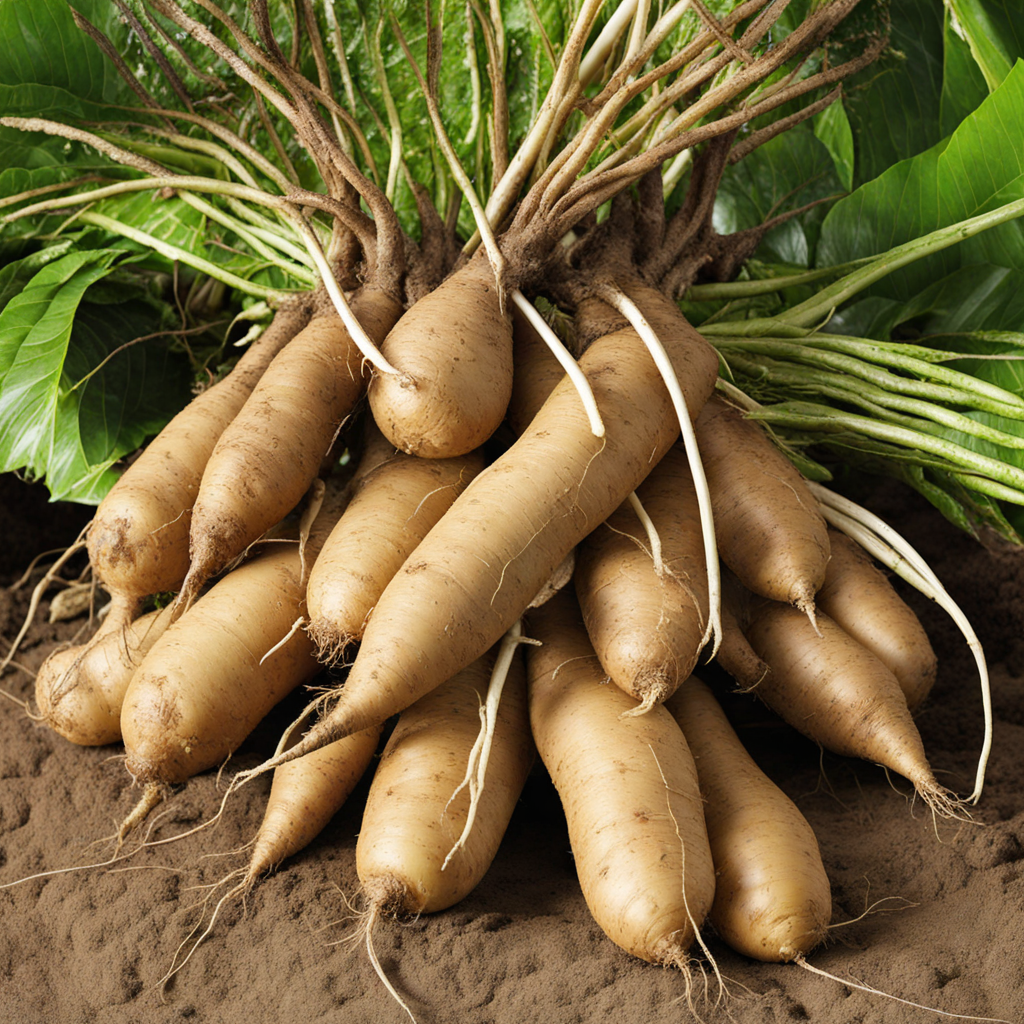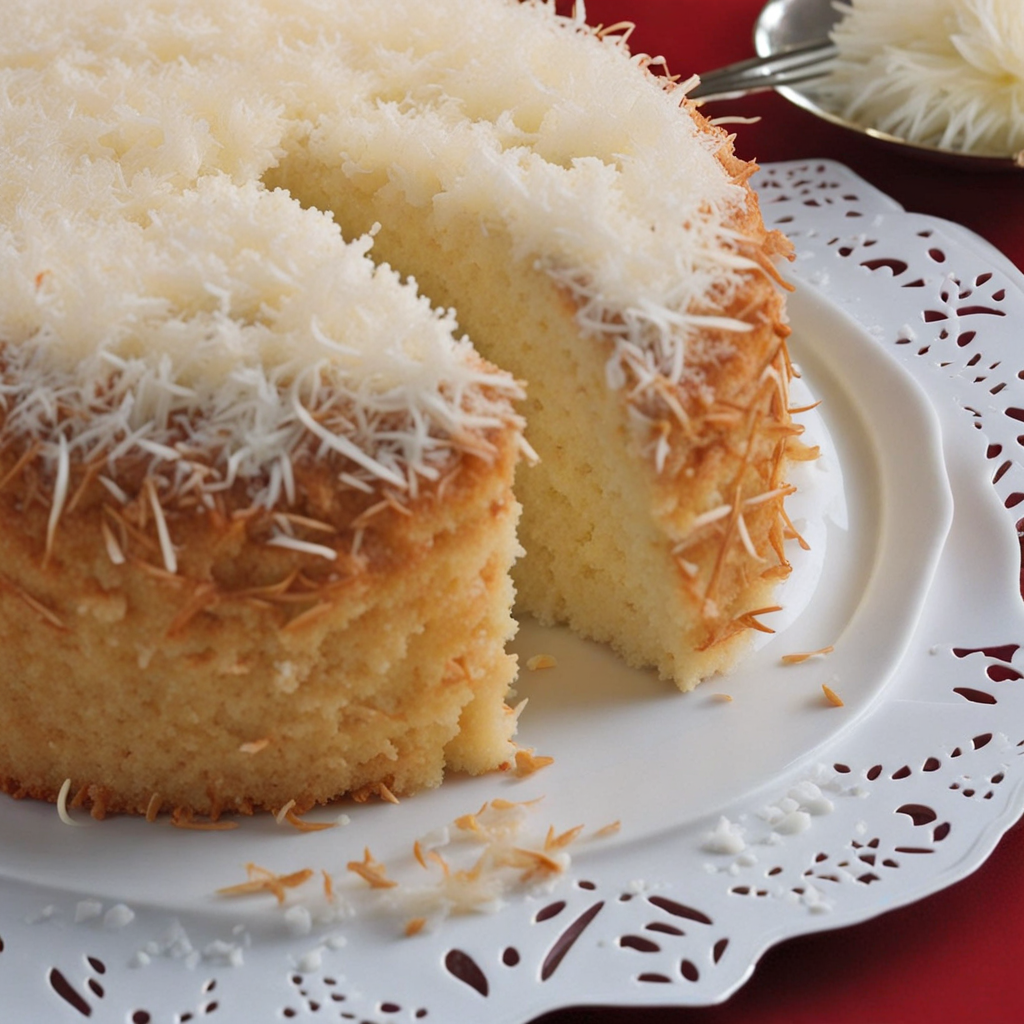Kapisi Pulu
Kapisi Pulu is a traditional Tongan dish that beautifully showcases the island's rich culinary heritage. This delightful meal consists of tender, slow-cooked corned beef, typically simmered to perfection with coconut cream. The dish is commonly paired with the flavor-packed local vegetable, taro leaves, which are often stewed until they are soft and infused with the creamy essence of coconut. The combination of the savory meat and the luscious, aromatic sauce creates a symphony of flavors that is both comforting and satisfying. What sets Kapisi Pulu apart is its unique blend of textures and tastes. The corned beef offers a hearty, salty flavor that contrasts beautifully with the sweet and rich coconut cream. As you take a bite, you'll experience the creaminess of the sauce enveloping the tender beef, while the taro leaves add a fresh, earthy note to the dish. It's a perfect representation of the Tongan philosophy of using simple, fresh ingredients to create memorable meals that bring family and friends together. This dish is often enjoyed as part of a larger feast, frequently accompanied by rice or kumara (sweet potato), making it a versatile option for any occasion. Kapisi Pulu not only nourishes the body but also connects those who partake in it to the vibrant culture and traditions of Tonga. A taste of this dish is an invitation to explore the heart of Tongan cuisine, where every bite tells a story of the land and its people.
How It Became This Dish
The History of Kapisi Pulu: A Culinary Treasure of Tonga Kapisi Pulu is a traditional dish from Tonga that embodies the rich culinary heritage of the islands. This simple yet flavorful dish, consisting primarily of corned beef, coconut cream, and cabbage, tells a story of cultural exchange, adaptation, and the resilience of the Tongan people through the ages. To understand the significance of Kapisi Pulu, one must explore its origins, cultural importance, and its evolution over time. #### Origins: A Fusion of Cultures The roots of Kapisi Pulu can be traced back to the early 19th century, a time marked by significant cultural exchanges in the Pacific region. Tonga, located in the heart of Polynesia, was influenced by various external forces, including European explorers and missionaries who arrived on the islands. These interactions brought new foods, cooking techniques, and culinary practices that would shape Tongan cuisine. Corned beef, a key ingredient in Kapisi Pulu, was introduced to Tonga by European traders and whalers. During the 19th century, canned goods became essential in the diets of many Pacific Islanders, especially as they began to engage more with the global economy. The introduction of corned beef was particularly significant; it provided a reliable source of protein that could be easily stored and transported, making it a staple in many Tongan households. Coconut, on the other hand, has always been a cornerstone of Tongan cuisine. The coconut tree, often referred to as the "tree of life," offers a variety of uses, from food to shelter. The creamy richness of coconut milk adds depth and flavor to many dishes, including Kapisi Pulu. Cabbage, brought to the islands by early European settlers, complements the dish with its crunchy texture and mild flavor. #### Cultural Significance Kapisi Pulu is more than just a meal; it is a symbol of Tongan identity and community. In Tongan culture, food plays a crucial role in social gatherings, family celebrations, and communal events. Kapisi Pulu is often served during feasts, weddings, and funerals, embodying the spirit of sharing and hospitality that is central to Tongan life. The preparation of Kapisi Pulu is also a communal activity. Families often come together to cook, sharing stories and laughter as they prepare the dish. This sense of togetherness reinforces social bonds and cultural ties, allowing younger generations to learn about their heritage through culinary traditions. In many households, recipes for Kapisi Pulu are passed down from mothers to daughters, ensuring that the dish retains its place in Tongan culture. Moreover, Kapisi Pulu can be seen as a reflection of Tongan resilience. The adaptation of local ingredients to incorporate foreign influences illustrates how the Tongan people have embraced change while honoring their traditions. The dish serves as a reminder of Tonga's ability to absorb and transform external influences, creating a unique culinary identity that resonates with both history and modernity. #### Development Over Time As Tongan society has evolved, so too has the preparation and presentation of Kapisi Pulu. Traditionally, the dish is cooked by boiling the corned beef and cabbage together before adding rich coconut cream. This straightforward method highlights the natural flavors of the ingredients, allowing them to shine through. In contemporary Tonga, however, there has been a shift in how Kapisi Pulu is prepared and enjoyed. While traditional methods are still cherished, modern cooking techniques and influences have introduced variations to the dish. Some cooks may choose to sauté the cabbage before adding the corned beef and coconut cream, enhancing the flavors with spices and aromatics. Others might experiment with additional ingredients, such as carrots, bell peppers, or even local fish, to create a fusion of flavors that reflects the diverse culinary landscape of the islands. The globalization of food culture has also played a role in the evolution of Kapisi Pulu. As Tongans migrate to different parts of the world, they bring their culinary traditions with them, adapting recipes to suit the availability of ingredients and the tastes of their new communities. In Tongan diasporas, Kapisi Pulu has found its way into potlucks and community events, allowing Tongans to connect with their roots and share their heritage with non-Tongan friends. The popularity of Kapisi Pulu has even extended beyond Tonga, with many Pacific Islander communities embracing the dish as a symbol of their shared cultural heritage. It has gained recognition in restaurants and food festivals, showcasing the richness of Tongan cuisine to a wider audience. #### Conclusion Kapisi Pulu stands as a testament to the resilience and adaptability of Tongan culture. Its origins reflect a blend of indigenous ingredients and European influences, while its preparation and communal significance highlight the importance of family and community in Tongan society. As it continues to evolve, Kapisi Pulu remains a beloved dish that connects generations, embodying the spirit of Tonga's culinary heritage. In a world that is constantly changing, Kapisi Pulu serves as a delicious reminder of the past and a bridge to the future. Whether enjoyed at a family gathering or a community feast, this humble dish encapsulates the heart and soul of Tonga, celebrating the flavors of a rich and diverse culture that has withstood the test of time. Through Kapisi Pulu, we not only taste the history of Tonga but also savor the enduring spirit of its people.
You may like
Discover local flavors from Tonga







